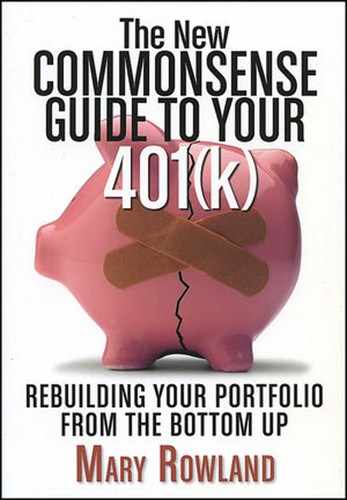SUCCESSFUL INVESTING is all about discipline: discipline in buying and discipline in selling. The best way to discipline yourself is with a systematic investment program in which you make regular monthly or quarterly investments no matter what is happening in the market.
What better way to do this than with your 401(k) plan? You decide at the beginning of the year how much you want deducted from your paycheck; that amount is automatically invested, based on your instructions, at regular intervals throughout the year.
Making automatic investments at regular intervals allows you to take advantage of a "strategy" called dollar-cost averaging (DCA), a bit of investment jargon with a simple meaning: You invest the same amount of money at regular intervals no matter what happens in the market. DCA allows investors to avoid guessing whether the market is going up or down. Your dollars buy more shares when the price goes down and less when it goes up. This strategy helps you spread your risk by paying varying prices for shares of the same stock or fund. Studies show that investors who use dollar-cost averaging tend to pay less per share over time than those who purchase shares in a lump sum.
DCA works particularly well for buying volatile funds because the same $100 buys more shares when the fund's price is down and fewer when it's up. Left to our own decisions, most of us tend to do just the opposite: We buy a fund when it's "hot" and trading at a high and dump it when the price sags, locking in our losses. The better way, of course, is to have confidence in the investment we chose and to continue adding dollars.
Personal finance writers, particularly in the 1990s, were rarely rewarded for writing about dollar-cost averaging or any other simple, supposedly "tried-and-true" method of investing. Instead, the rewards came from debunking these boring and predictable investment strategies. Editors wanted contrarian advice, something with punch, for all those readers waiting to make their million in the stock market. So in that decade, we saw a lot of articles criticizing dollar-cost averaging.
One of the criticisms was written by Timothy Middleton, my former colleague from MSN Money and someone I respect as a writer and reporter. Middleton's column argues that the adage that "Dollar-cost averaging helps you avoid investing too much when the market is high, too little when the market is low," is bunk. How could so many knowledgeable investors disagree so much on what seems a simple strategy?
I found the answer in Middleton's column where he says, "Dollar-cost averaging is similar to, but not the same thing as investing regularly scheduled amounts, such as contributions from every paycheck to a 401(k) plan. It's the alternative to investing a lump sum, such as an inheritance or an IRA rollover, typically over four calendar quarters." In other words, people who talk about DCA mean two different things. Many investors criticize the decision to invest a lump sum over a period of time, such as one year. Even that criticism seemed rash in 2009 when the markets exhibited irrational behavior. Suppose you inherited a half million dollars in 2009. With the market, as measured by the Dow Jones Industrial Average trading in a range from around 6,500 to nearly 10,000, you might have been nervous to dump your entire nest egg in on one day.
But investors in a 401(k) plan do not make a decision about whether to dollar-cost average by depositing the same sum at regular intervals instead of investing the lump all at one time. You simply sign up and indicate how much you want to contribute. That amount is automatically deducted from your paycheck and you will get the benefit of DCA or buying more shares when the price is down, less when it's up without giving it a thought. That discipline to keep pumping money into your investments when the market tanks like it did in September 2008 would serve us well. I doubt if I was the only individual investor who made no investments in early 2009 even as the market moved lower and lower. If I had a system set up to invest regularly every month, my portfolio might look a whole lot better today.
